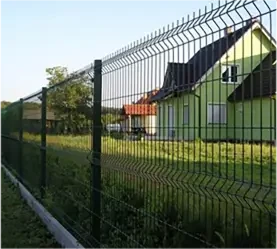The Effectiveness of Highway Noise Barriers
Highway noise pollution has increasingly become a concern in urban and suburban areas, affecting the quality of life for millions of residents. As traffic volume rises with population growth and urban sprawl, the need for effective solutions to mitigate the impacts of highway noise has never been more critical. One widely implemented strategy is the construction of noise barriers. This article explores the effectiveness of such barriers, examining their design, material choices, and overall impact on reducing noise levels.
Understanding Highway Noise Pollution
Highway noise is primarily generated by vehicles as they travel at high speeds. The sound from engines, tires, and wind resistance can create a continuous din that permeates nearby residential areas. Studies have shown that prolonged exposure to high levels of noise can lead to various health issues, including stress, sleep disturbances, and cardiovascular problems. Therefore, reducing noise pollution is essential for enhancing public health and improving the overall living environment.
Design and Material of Noise Barriers
Noise barriers, also known as sound walls, are structures designed to block or absorb sound waves. Their effectiveness depends on various factors, including height, length, material, and location relative to the noise source and receivers. Common materials used in noise barrier construction include concrete, wood, and certain types of plastics. Each material has its characteristics – concrete is durable and effective, while wood can provide aesthetic value and is often used in residential areas.
The height of the barrier is one of the most crucial factors affecting its sound-blocking capabilities. A taller barrier generally provides better sound attenuation because it intercepts more sound waves before they reach the surrounding areas. However, practical considerations such as zoning laws, cost, and aesthetic impact must be balanced when deciding the height and overall design of the barrier.
Effectiveness in Noise Reduction
highway noise barriers effectiveness

Research has shown that properly designed and constructed noise barriers can significantly reduce highway noise levels. Studies indicate that barriers can decrease sound levels by 5 to 15 decibels, which is perceived as a substantial reduction in loudness. The effectiveness of barriers also varies depending on distance. The farther a residential area is from the highway, the less impact the noise barrier has. It is essential to consider the topography of the land as well; hilly or uneven terrain can affect how sound travels.
However, while noise barriers can be effective, they are not a one-size-fits-all solution. The effectiveness can be influenced by several factors, such as the type of vehicles on the highway (larger trucks produce more noise than cars), the speed of traffic, and weather conditions, which can affect sound propagation. Additionally, barriers often work best in combination with other noise reduction strategies, such as better pavement materials or modified road designs, which can help reduce noise at the source.
Aesthetic and Environmental Considerations
While the primary goal of noise barriers is to reduce sound levels, aesthetic considerations are also significant. Many communities express concern over the visual impact of large concrete walls. As a result, designers are increasingly incorporating landscaping and artistic elements into barrier construction. Vegetation, such as trees and shrubs, can enhance the beauty of the barriers and improve their effectiveness through additional sound absorption.
Moreover, noise barriers can also provide ecological benefits. They can serve as habitats for birds and other wildlife, contributing to biodiversity in urban areas. By designing multifaceted barriers with ecological and aesthetic considerations, communities can improve their overall urban landscape while addressing noise pollution.
Conclusion
In summary, the effectiveness of highway noise barriers is determined by various factors, including design, materials, height, and environmental context. While they are not a panacea for noise pollution, when strategically implemented, noise barriers can significantly reduce sound levels and enhance the quality of life for residents in nearby areas. As urbanization continues to expand, a thoughtful approach to noise mitigation, incorporating aesthetics and ecological factors, will be vital for developing sustainable and livable urban environments. With ongoing research and innovation in design and materials, we can continue to improve the effectiveness of highway noise barriers, making our cities quieter and more enjoyable places to live.
-
Why Galvanized Trench Cover Steel Grating Resists Corrosion
NewsJul.10,2025
-
The Versatility and Strength of Stainless Expanded Metal Mesh
NewsJul.10,2025
-
Load Calculations in Steel Grating Platforms
NewsJul.10,2025
-
Keeping Pets and Kids Safe with Chicken Wire Deck Railing
NewsJul.10,2025
-
Hole Diameter and Pitch for Round Perforated Metal Sheets
NewsJul.10,2025
-
Aluminium Diamond Mesh in Modern Architecture
NewsJul.10,2025
Subscribe now!
Stay up to date with the latest on Fry Steeland industry news.

